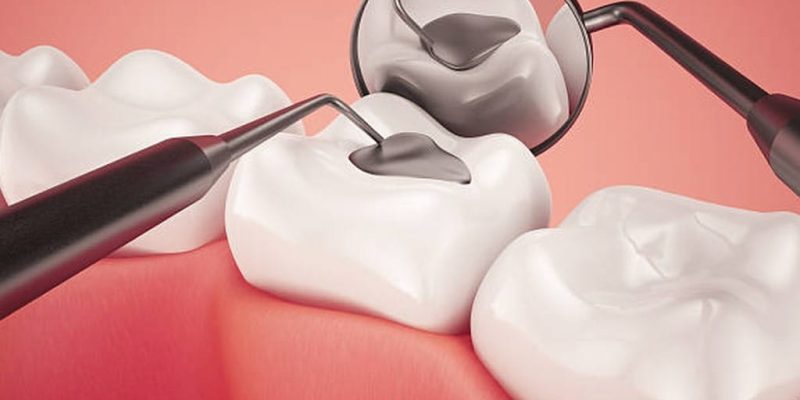- Max Super Speciality Hospital, Sector-128, Noida
- CLINIC : + 91 8076243481
Blog

Details
READING TIME
3 min
CATEGORY
Blog
AUTHOR
Dr. Praveen Kumar
The Different Types of Dental Fillings
Dental fillings play a crucial role in maintaining oral health by addressing cavities and restoring damaged teeth. With advancements in dental technology, various types of dental fillings are now available, each offering unique benefits and considerations. In this article, we'll delve into the different types of dental fillings to help you make informed decisions about your oral care.
- Amalgam Fillings: Amalgam fillings have been a staple in dentistry for over a century. Composed of a mixture of metals, including silver, tin, copper, and mercury, these fillings are known for their durability and affordability. Amalgam fillings are particularly suitable for molars and premolars, where chewing forces are greater. However, concerns about mercury exposure have led to a decline in their popularity in recent years.
- Composite Fillings: Composite fillings are a popular choice for those seeking a more natural appearance. Made of a mixture of plastic and fine glass particles, these fillings can be color-matched to the patient’s natural tooth shade. Composite fillings bond well with the tooth structure, providing added support. Although they are less durable than amalgam fillings, advancements in material technology have improved their longevity.
- Ceramic Fillings: Ceramic fillings, often made of porcelain, are known for their aesthetic appeal and biocompatibility. They closely resemble natural teeth in color and texture, making them an excellent choice for visible areas. Ceramic fillings are resistant to staining and can withstand moderate chewing forces. While they are more expensive than amalgam or composite fillings, their durability and lifelike appearance make them a popular choice.
- Glass Ionomer Fillings: Glass ionomer fillings are a unique option that releases fluoride over time, aiding in the prevention of further decay. These fillings are often used for children or in areas with low bite pressure, such as around the gum line. While they are not as durable as some other options, their fluoride-releasing properties make them beneficial in specific situations.
- Gold Fillings: Gold fillings, also known as inlays or onlays, are composed of a mixture of gold and other metals. These fillings are highly durable and well-tolerated by gum tissues. Their longevity and ability to withstand heavy chewing forces make them an excellent choice for posterior teeth. However, their conspicuous appearance and higher cost can be deterrents for some patients.
About Us
Dr. Praveen Kumar is a distinguished professional who holds a Master’s Degree in Dental Surgery from Meerut University, he furthered his education with an MBA in Health Care Administration from FMS, Delhi University. Dr. Kumar is a Diplomat of the World Congress of Oral Implantology and a Fellow of both the Pierre Fauchard Academy and the International College of Dentists. Dr. Kumar is a Diplomat of the World Congress of Oral Implantology and a Fellow of both the Pierre Fauchard Academy and the International College of Dentists.
Information
- Developed By Online B2B Digital Technology © 2024 – All Rights Reserved
